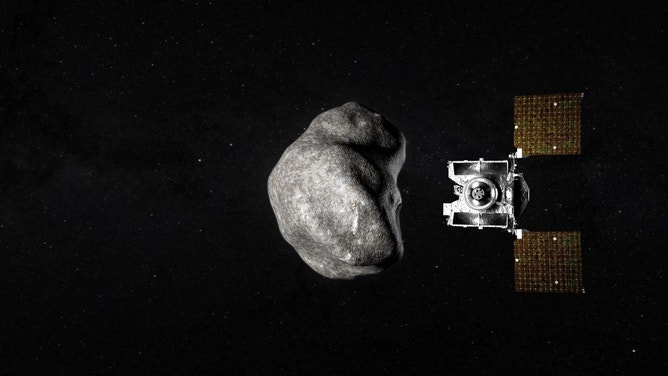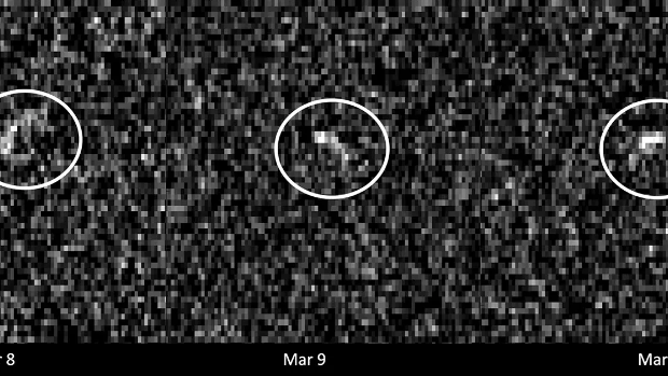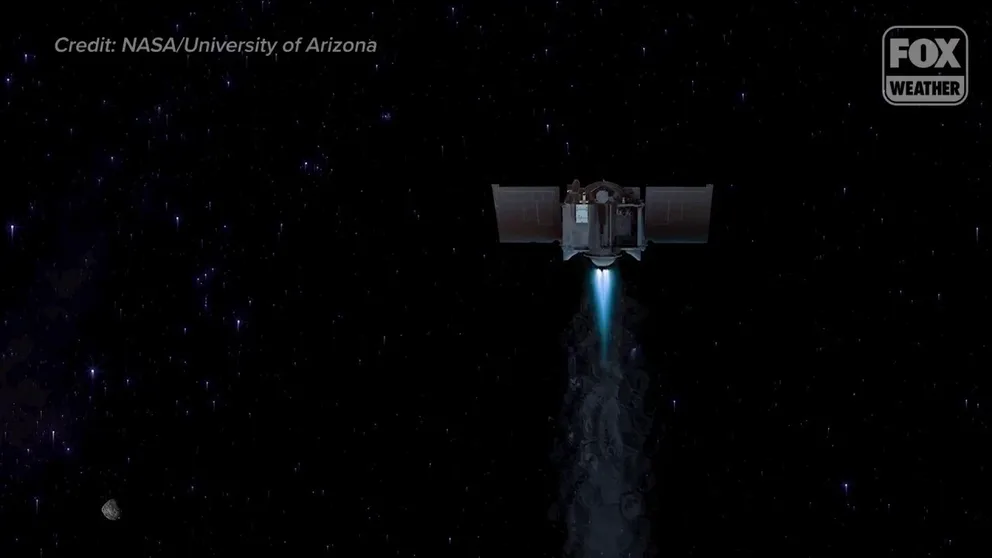NASA spacecraft to converge with Demon of Chaos asteroid as it nears Earth
Initially thought to be on a crash course with Earth, Apophis earned its name from the demon serpent in Egyptian mythology. The asteroid won't impact Earth -- at least for the next century -- but a close approach in 2029 is an optimal time for NASA's OSIRIS-APEX spacecraft to study the asteroid.
NASA asteroid spacecraft gets a second mission
NASA's OSIRIS-REx spacecraft got approved for a second mission to study asteroid Apophis when it makes a close flyby of Earth in 2029.
After dropping off an asteroid sample to Earth, a NASA spacecraft is on a new adventure to intersect the asteroid Apophis, named after the Egyptian spirit of chaos, as it makes a close approach to Earth in 2029.
NASA's OSIRIS-REx spacecraft successfully dropped off a sample collected from the asteroid Bennu in September. With its first mission completed, the space agency said the probe began a new mission to study the near-Earth asteroid Apophis. This earned the spacecraft a new acronym: OSIRIS-APEX for Apophis Explorer.
In 2022, NASA approved $200 million to cover the extended mission, which was welcome news to the University of Arizona team led by the mission's principal investigator, Daniella DellaGiustina.
'LOSS OF SIGNAL:' NASA SUCCESSFULLY CRASHES DART SPACECRAFT INTO ASTEROID FOR PLANETARY DEFENSE

An artist rendering shows OSIRIS-APEX pursuing asteroid Apophis during its close flyby of Earth on April 13, 2029. (Image: NASA's Goddard Space Flight Center Conceptual Image Lab)
Instead of traveling through the solar system and collecting a sample as the spacecraft did with Bennu in 2020, OSIRIS-APEX gets to wait for its subject a little closer to home. Apophis is set to make a close flyby of Earth in April 2029, within 20,000 miles. This encounter is close enough that those on Earth in the Eastern Hemisphere will be able to see the asteroid with the naked eye.
Demon of Chaos makes a close brush with Earth
The asteroid Apophis was discovered in 2004 at the Kitt Peak Observatory in Arizona and caused a big scare that it could impact Earth.
Apophis earned its name from the demon serpent in ancient Egyptian mythology, which represented evil, chaos, destruction and darkness.
The asteroid is about 1,100 feet wide and only approaches Earth once every 7,500 years.

These images of asteroid Apophis were recorded in March 2021 by radio antennas at the Deep Space Network’s Goldstone complex in California and the Green Bank Telescope in West Virginia. The asteroid was 10.6 million miles away, and each pixel has a resolution of 127 feet. (Image credit: NASA/JPL-Caltech and NSF/AUI/GBO)
(NASA)
Apophis won't be bringing chaos to Earth, at least for the next century, according to NASA.
By March 2021, astronomers changed their assessment of the orbital path of Apophis and concluded that the asteroid would not impact Earth in our lifetime.
NASA FINDS WATER, BUILDING BLOCKS OF LIFE IN LARGEST-EVER ASTEROID SAMPLE
The upcoming close approach is an optimal time for ground observations and for OSIRIS-APEX to study the asteroid.
In late March 2029, Apophis will begin to come into view for the spacecraft. The team will get to work trying to understand the asteroid's rotation rate and the length of a day on Apophis. By early April 2029, OSIRIS-APEX will lock on to its target, taking images of the asteroid.
EVERYTHING SCIENTISTS WOULD WANT TO KNOW IF AN ASTEROID WAS HEADING TOWARD EARTH
On April 13, 2029, Apophis is expected to safely zoom by our planet, where OSIRIS-APEX will be waiting to begin its survey of the asteroid. Coming so close to Earth's gravity is expected to change the asteroid's orbit and possibly stir up its surface. OSIRIS-APEX will be able to monitor the asteroid for these changes immediately after it zooms past Earth.
After a year of studying the asteroid up close, in October 2030, OSIRIS-APEX will conduct a regolith excavation by spacecraft thrusters (REST) maneuver. This is a fancy way of saying, "We blow a bunch of material around on the surface and then take a second look to see what exactly we did," DellaGiustina told FOX Weather in 2022.
Studying Apophis is vital for understanding how we might mitigate a hazardous asteroid in the future if it were on a collision course with Earth.
